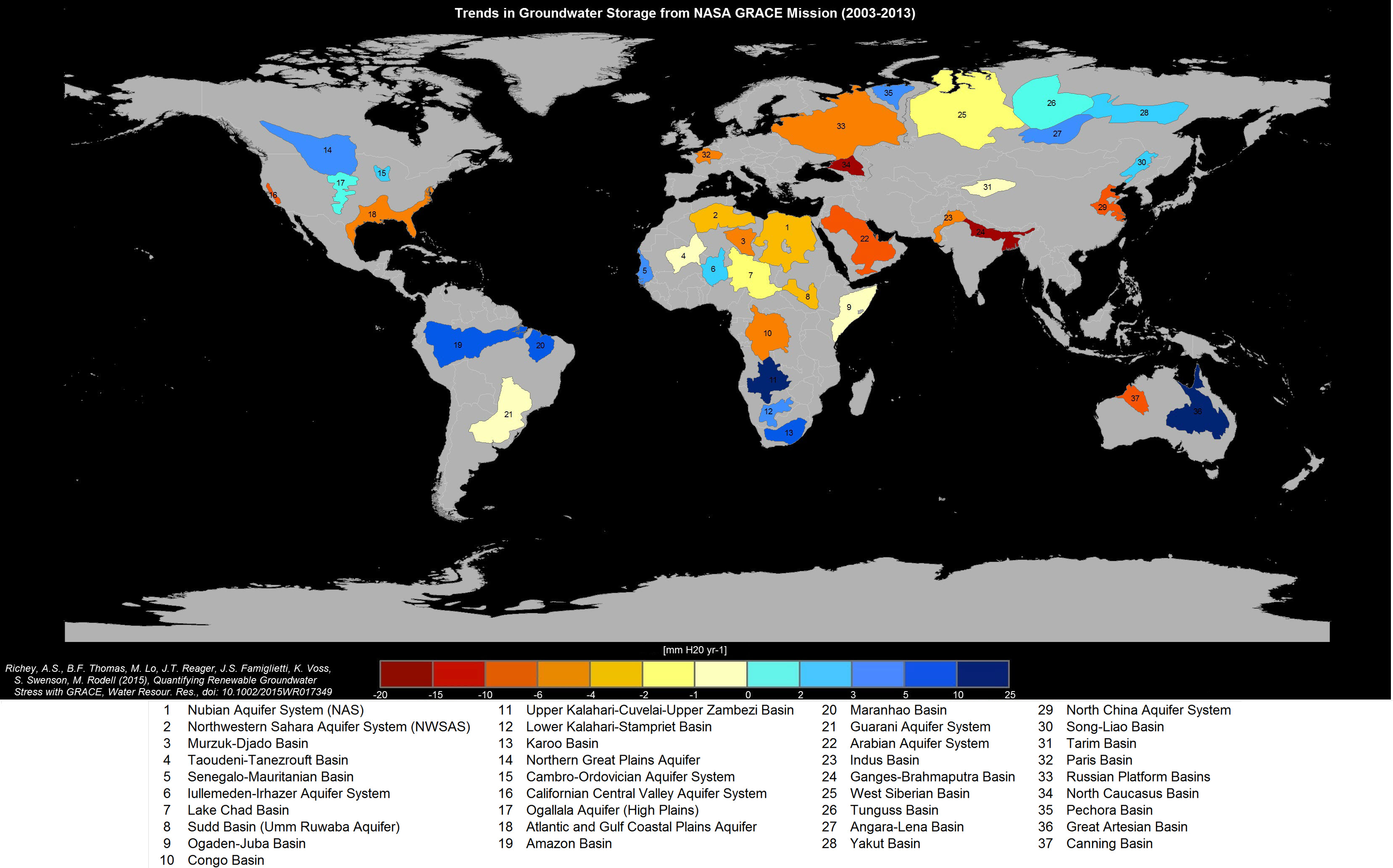Trends in Groundwater Storage from NASA
July 1, 2015 5:00pm by Barry Ritholtz
This content, which contains security-related opinions and/or information, is provided for informational purposes only and should not be relied upon in any manner as professional advice, or an endorsement of any practices, products or services. There can be no guarantees or assurances that the views expressed here will be applicable for any particular facts or circumstances, and should not be relied upon in any manner. You should consult your own advisers as to legal, business, tax, and other related matters concerning any investment. The commentary in this “post” (including any related blog, podcasts, videos, and social media) reflects the personal opinions, viewpoints, and analyses of the Ritholtz Wealth Management employees providing such comments, and should not be regarded the views of Ritholtz Wealth Management LLC. or its respective affiliates or as a description of advisory services provided by Ritholtz Wealth Management or performance returns of any Ritholtz Wealth Management Investments client. References to any securities or digital assets, or performance data, are for illustrative purposes only and do not constitute an investment recommendation or offer to provide investment advisory services. Charts and graphs provided within are for informational purposes solely and should not be relied upon when making any investment decision. Past performance is not indicative of future results. The content speaks only as of the date indicated. Any projections, estimates, forecasts, targets, prospects, and/or opinions expressed in these materials are subject to change without notice and may differ or be contrary to opinions expressed by others. The Compound Media, Inc., an affiliate of Ritholtz Wealth Management, receives payment from various entities for advertisements in affiliated podcasts, blogs and emails. Inclusion of such advertisements does not constitute or imply endorsement, sponsorship or recommendation thereof, or any affiliation therewith, by the Content Creator or by Ritholtz Wealth Management or any of its employees. Investments in securities involve the risk of loss. For additional advertisement disclaimers see here: https://www.ritholtzwealth.com/advertising-disclaimers Please see disclosures here: https://ritholtzwealth.com/blog-disclosures/
What's been said:
Discussions found on the web:Posted Under
Previous Post
The World's Most Respected Companies


All the black is water. Is not the solution obvious?
Process it into potable water or water suitable for agriculture/industrial and build infrastructure to move it. Besides, with climate change raising sea levels, this may also solve that hypothetical issue as well.
Too bad NASA can’t detect how much of this water has been compromised by fracking, but unfortunately this requires water sampling using expensive and complex analysis equipment. It’s getting to be that almost every month we’re seeing a new peer-reviewed publication showing well water contamination, such as arsenic and hydrocarbons, near fracking sites. Yet industry and government regulators, controlled by financial contributions from industry downplay the seriousness of this contamination, just like the tobacco industry did in the 1950s.
If we don’t start taking appropriate action to prevent aquifer contamination by fracking, we may soon find huge regions permanently without usable well water.
A few observations:
1) Thank goodness that the Amazon basin is remaining well supplied! That’s part of the Earh’s “lungs” and we’re going to need as much of what’s left of those rainforests in the coming decades;
2) MENA can’t catch a break;
3) When you consider how much of the world’s food production from the many arable lands comes from a relatively small slice of the Earth called California, it ought to make people very appreciative for their blessings -and- very anxious that there’s such a delicate balance holding this trend together.
Some of the biggest factors where we can exert some control (i.e. land and water use) we’re failing to manage well, so I hope our luck continues AND we wise-up about 50 IQ points to achieve an intentional measure of stasis.